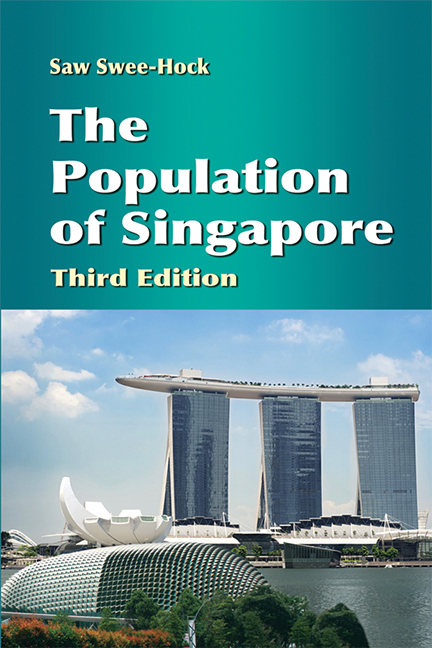Book contents
- Frontmatter
- Contents
- List of Tables
- List of Figures
- Preface
- Preface to Second Edition
- Preface to Third Edition
- 1 Background
- 2 Population Growth and Distribution
- 3 Changing Population Structure
- 4 Migration
- 5 Mortality Trends and Differentials
- 6 Marriage Trends and Patterns
- 7 Divorce Trends and Patterns
- 8 Fertility Trends and Differentials
- 9 Family Planning, Abortion and Sterilisation
- 10 Fertility Policies and Programmes
- 11 Immigration Policies and Programmes
- 12 Labour Force
- 13 Future Population Trends
- Appendix
- Bibliography
- Index
8 - Fertility Trends and Differentials
Published online by Cambridge University Press: 21 October 2015
- Frontmatter
- Contents
- List of Tables
- List of Figures
- Preface
- Preface to Second Edition
- Preface to Third Edition
- 1 Background
- 2 Population Growth and Distribution
- 3 Changing Population Structure
- 4 Migration
- 5 Mortality Trends and Differentials
- 6 Marriage Trends and Patterns
- 7 Divorce Trends and Patterns
- 8 Fertility Trends and Differentials
- 9 Family Planning, Abortion and Sterilisation
- 10 Fertility Policies and Programmes
- 11 Immigration Policies and Programmes
- 12 Labour Force
- 13 Future Population Trends
- Appendix
- Bibliography
- Index
Summary
In Singapore there was the emergence of government concern at various times on certain aspects of the demography of the country and the subsequent implementation of government measures that had a direct or indirect impact on the future course of population trends. In the area of fertility, we have included the next two chapters to present a detailed account of government measures first introduced in the mid-1960s to encourage a reduction in fertility and the recent adjustment of the antinatalist policy to encourage more births. The effect of government measures will be touched upon in this chapter on fertility trends and differentials.
A general survey of fertility trends up to 1946 and a more thorough appraisal for the post-war period when comprehensive data became available will be presented. The complete absence of vital statistics make it impossible to cover the period prior to 1878, and even the information published during the first few decades after this period is grossly lacking in detail and reliability. The analysis of fertility differentials during the post-war period will be confined to the three main races who display marked differences explainable in terms of their divergent social, cultural, and economic development.
GENERAL FERTILITY TRENDS
In examining the general trends in fertility, we can go as far back as 1878 when birth statistics from the vital registration system were first made available. Even so, the births for the pre-war years were not tabulated according to the age of mothers, and hence the superior fertility indices such as the gross reproduction rate (GRR) and the total fertility rate (TFR) cannot be calculated. What we can derive is the crude birth rate defined as the number of births per thousand population. In utilising the statistics, we have also decided to present the births and the computed crude birth rate in Table 8.1 in terms of five-year periods in order to remove the somewhat erratic annual fluctuations and to enable us to focus our attention on the long-term movements. The population denominator adopted to calculate the rates refers to the average of the five mid-year populations in each given period.
- Type
- Chapter
- Information
- The Population of Singapore , pp. 152 - 186Publisher: ISEAS–Yusof Ishak InstitutePrint publication year: 2012



